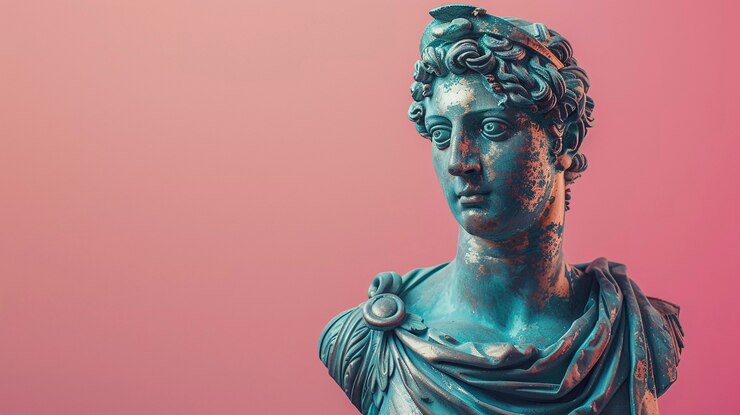Art has always been a mirror reflecting human experiences, offering glimpses into the lives of ancient civilizations. By delving into ancient artz, we unlock the secrets of long-lost cultures. From early cave paintings to majestic monuments, ancient art reveals the creativity and values of past societies. This article takes you through various facets of ancient artz, highlighting its evolution and significance across different eras and regions.
The Origins of Ancient Artz
Early art is marked by its simplicity and directness. This simplicity provides a clear view into early humans’ daily lives and beliefs. For instance, the cave paintings in Lascaux and Altamira, dating back around 17,000 years, depict animals such as bison, horses, and deer. These images served purposes beyond mere decoration, possibly related to hunting rituals or survival strategies.
Moreover, Venus figurines like the Venus of Willendorf play a significant role in prehistoric art. These small sculptures emphasize fertility and the female form, indicating that early humans had intricate social and spiritual understandings.
Art of Ancient Mesopotamia
Transitioning to ancient Mesopotamia, we see art becoming more sophisticated, reflecting the complexities of urban life. Mesopotamian art frequently utilized narrative and symbolism. Notable examples include cylinder seals and relief sculptures, which recorded transactions and events and conveyed the power of rulers.
One prominent artifact is the Stele of Hammurabi. This basalt pillar, inscribed with one of the earliest known legal codes, features a bas-relief of King Hammurabi receiving laws from the god Shamash. It illustrates the connection between divine authority and legal governance in Mesopotamian culture.
Art of Ancient Egypt
Ancient Egypt’s art is renowned for its focus on immortality and divine power. Egyptian art adhered to strict conventions and was deeply intertwined with religious beliefs and the afterlife.
Hieroglyphics, the intricate writing system of ancient Egypt, played a crucial role. These symbols appeared in tombs, temples, and monuments, conveying messages to the gods and ensuring the deceased’s journey to the afterlife. Additionally, monumental structures such as the pyramids and the Sphinx symbolized divine power and eternal life.
Furthermore, the use of color in Egyptian art was highly symbolic. For example, green represented fertility and rebirth, while black symbolized death and the underworld. This color symbolism helped convey complex ideas and spiritual beliefs.
Classical Art of Ancient Greece
Shifting focus to ancient Greece, art celebrated human form and intellect. Greek art is particularly noted for its realistic proportions and perspectives, especially in sculpture and architecture.
Sculptors like Phidias and Praxiteles created masterpieces like the Parthenon sculptures and the Venus de Milo. These works emphasized anatomical precision and the beauty of the human body. Additionally, Greek art explored themes of mythology, philosophy, and civic pride, reflecting the values of Greek society.
Greek architecture, exemplified by the Parthenon and the Temple of Zeus, showcased advancements in design and engineering. The use of columns—Doric, Ionic, and Corinthian—became a defining feature and influenced the following architectural traditions.
Roman Innovations in Art
Roman art built upon Greek traditions but introduced new elements and innovations. Romans used art to celebrate achievements and demonstrate power.
Roman art included realistic portraiture, grand public monuments, and detailed frescoes and mosaics. Portraits of emperors and notable figures captured their physical appearance and personality. Additionally, Roman engineering innovations, such as the arch and concrete, enabled the creation of impressive structures like the Colosseum and aqueducts.
Ancient Chinese Art
Turning to ancient China, art is known for its emphasis on harmony, balance, and symbolism. Chinese art often reflected the philosophical and spiritual ideals of Confucianism, Taoism, and Buddhism.
Traditional Chinese paintings and ceramics frequently depicted nature, conveying a deep connection to the natural world. Calligraphy, an esteemed art form in China, highlighted the aesthetic qualities of brushwork.
Chinese art also includes intricate jade carvings and bronze sculptures used in rituals. The Terracotta Army, buried with Emperor Qin Shi Huang, exemplifies the precision and grandeur of Chinese craftsmanship.
Art of Ancient India
Indian art is notably rich and diverse, reflecting the country’s spiritual and cultural landscape. Art from the Maurya, Gupta, and Chola dynasties contributed unique elements to this tradition.
Indian art is celebrated for its depiction of deities and mythological figures. Temples and sculptures often portrayed gods and goddesses in intricate forms. For example, the Ajanta and Ellora Caves are famous for their elaborate murals and sculptures illustrating scenes from Buddhist, Hindu, and Jain traditions.
Moreover, Indian architecture, such as the rock-cut temples of Ellora and the Khajuraho temples, demonstrates a deep understanding of geometry and artistic expression.
Legacy and Influence
The art of ancient civilizations leaves a lasting legacy that continues to influence modern art and culture. These artistic traditions have shaped our understanding and appreciation of creativity, from classical ideals to architectural innovations.
Studying ancient art provides valuable insights into historical societies’ social, political, and religious contexts. Museums and academic institutions strive to explore and share the stories behind these remarkable works, ensuring that the creativity of our ancestors remains a source of inspiration.
Conclusion
Ancient artz offers a profound connection to the past, revealing the values and beliefs of earlier cultures. From the earliest cave paintings to the monumental structures of Rome and Egypt, these artworks capture the essence of human creativity and cultural heritage. Exploring ancient art helps us understand and appreciate the timeless nature of artistic expression and the shared heritage that binds us across centuries.






